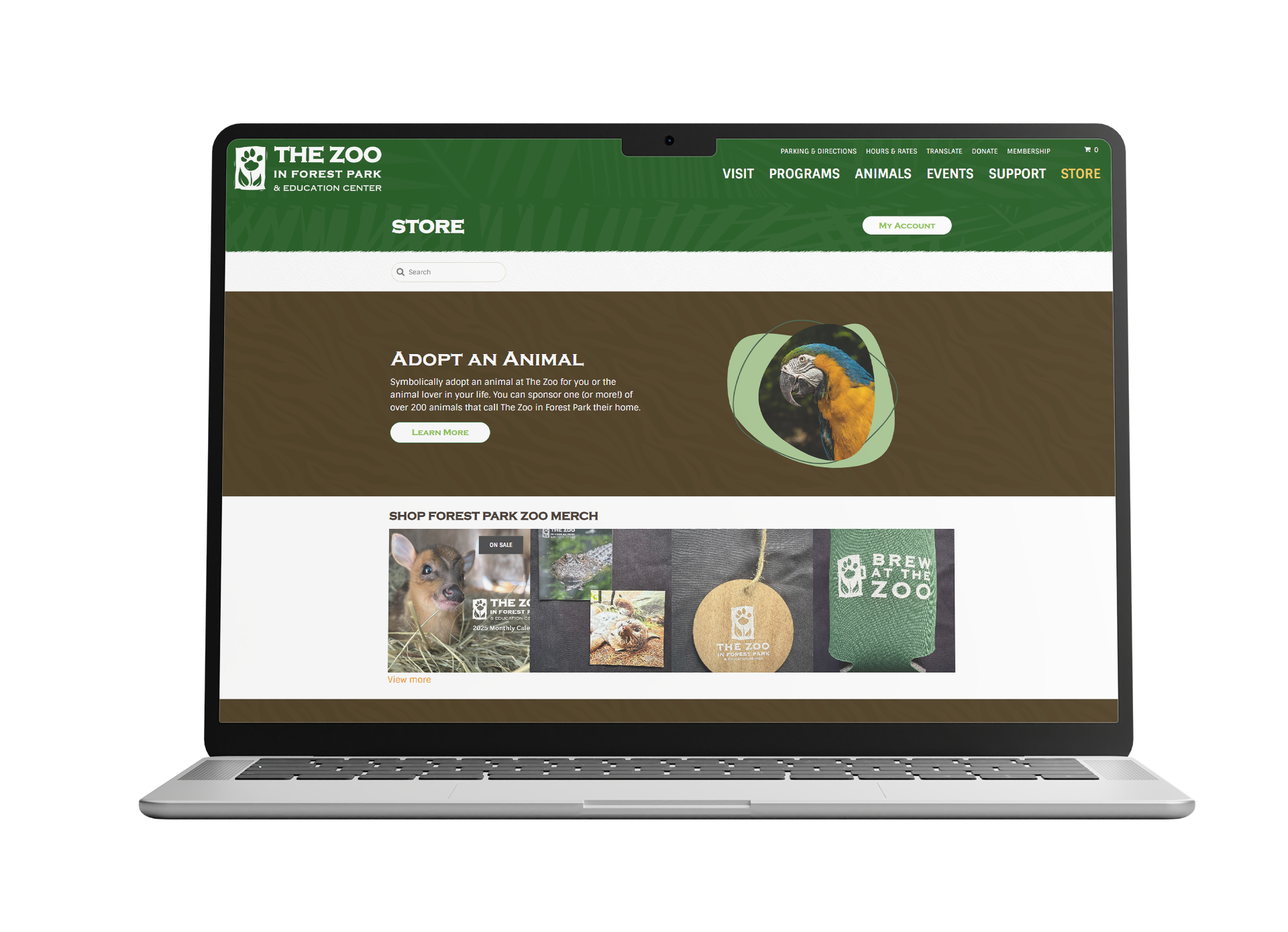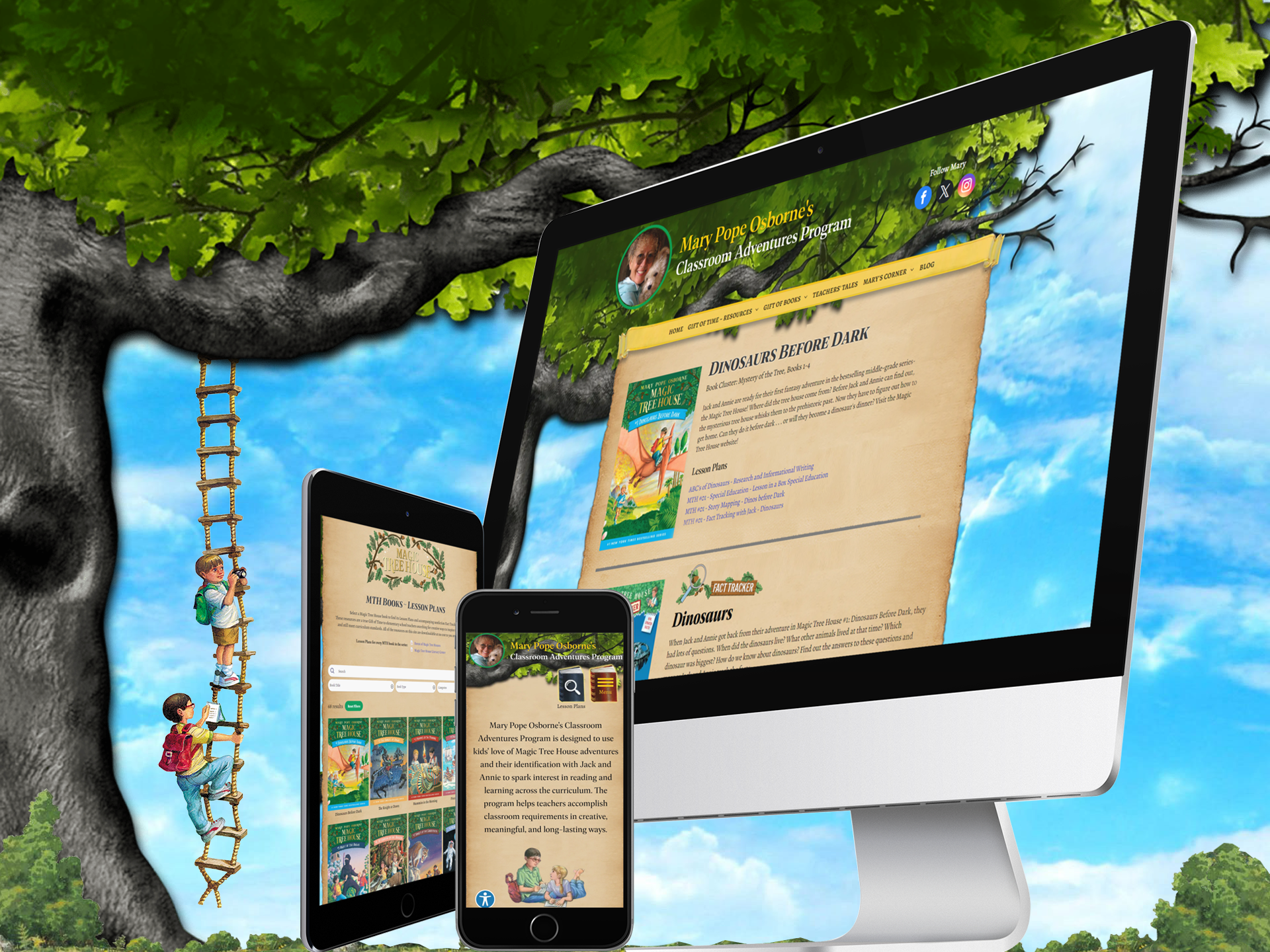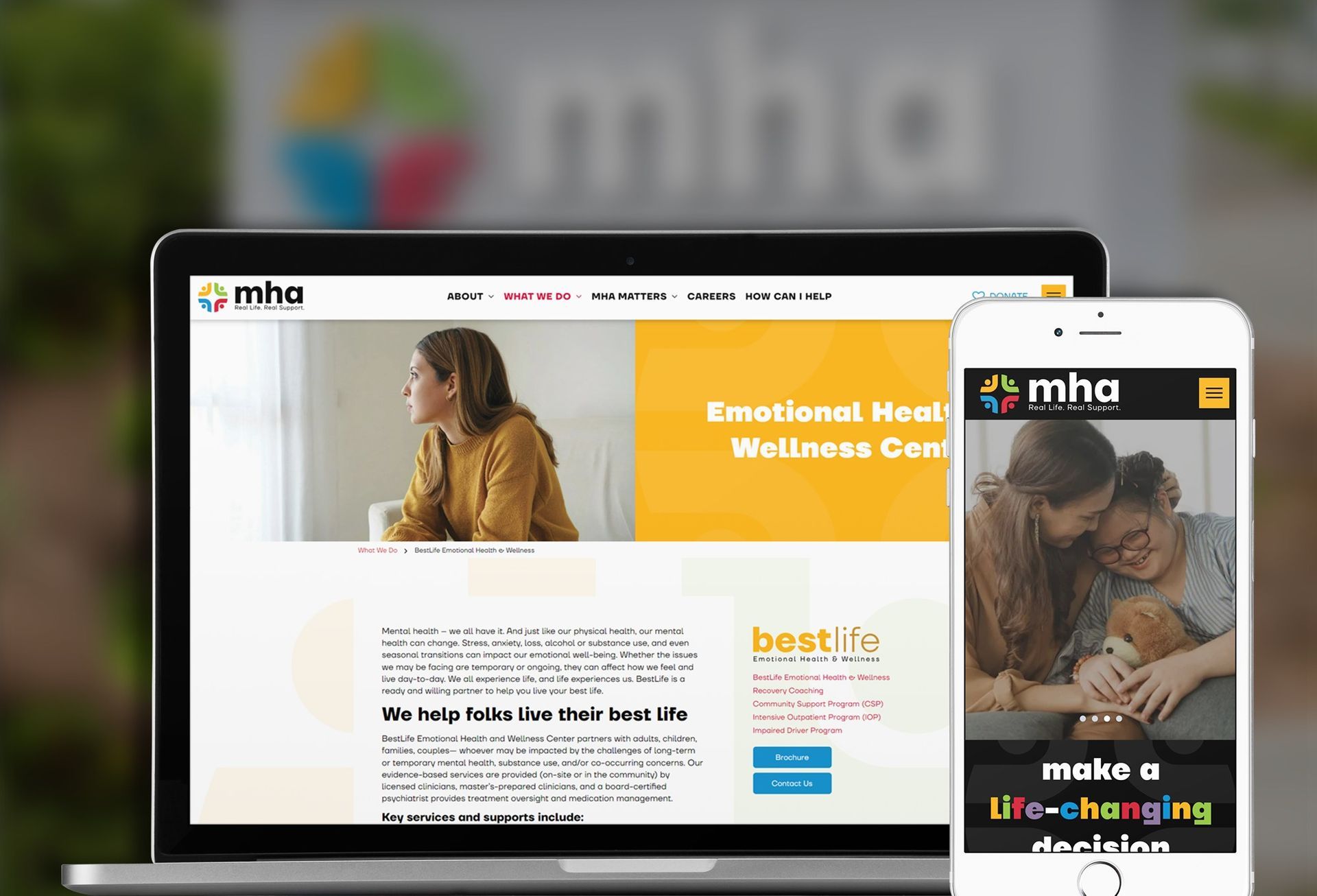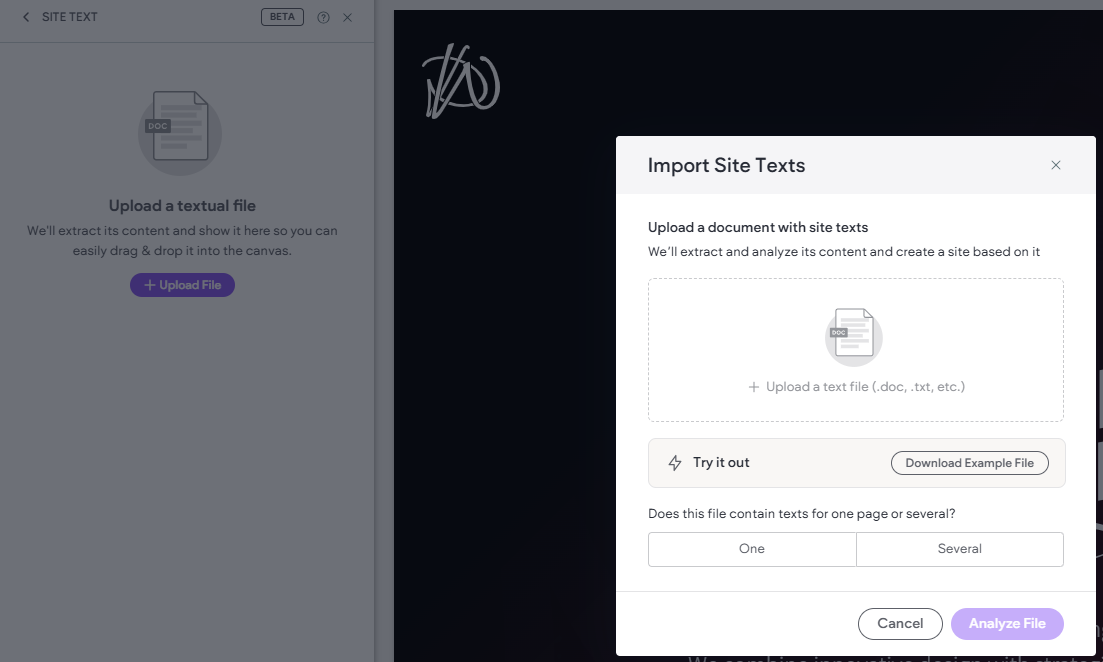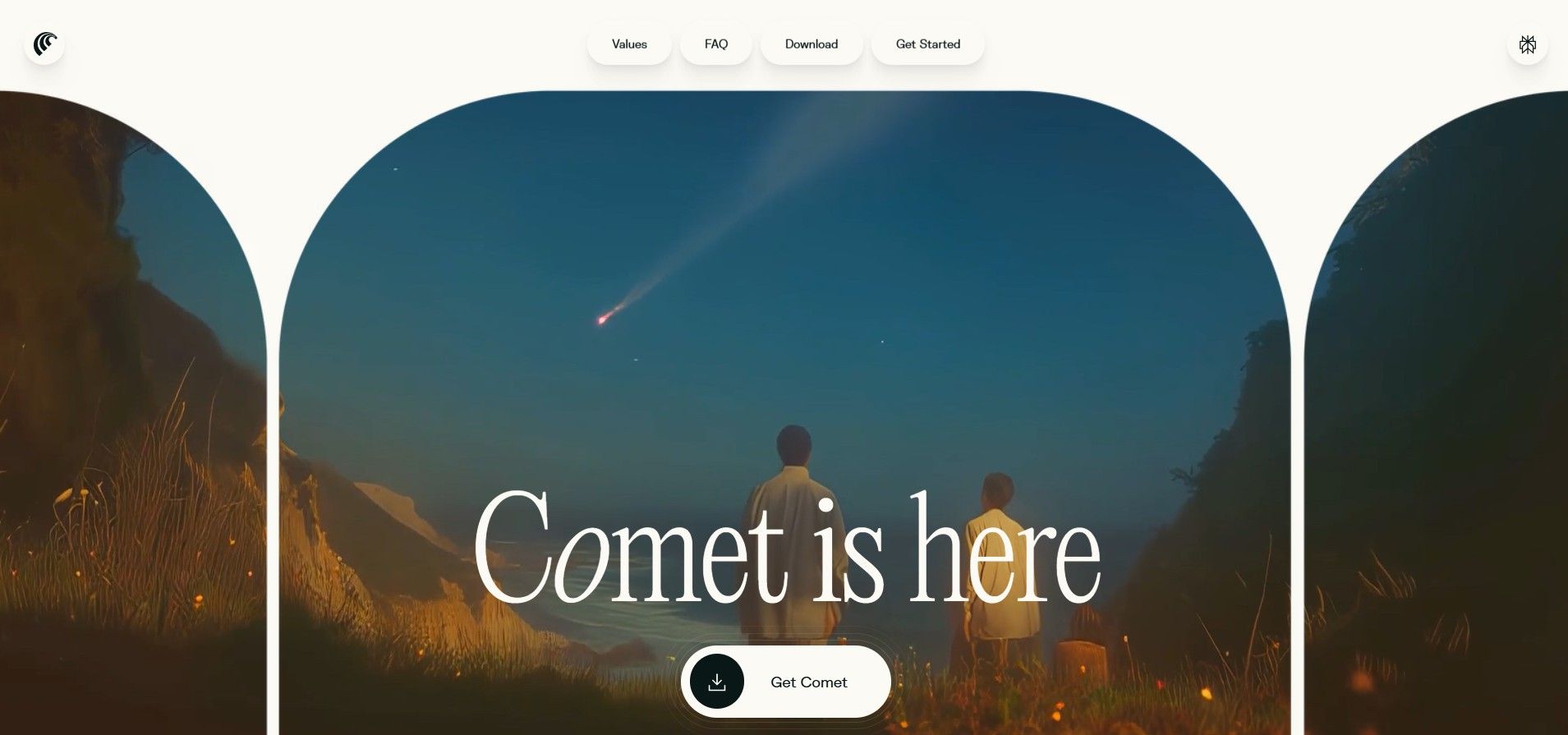Making Non-Profit Websites a Breeze
We know non-profits want websites that are easy to manage, look great, and help organize everything from programs to donations. That’s why we created Breeze, our own website platform packed with tools designed just for organizations like yours.
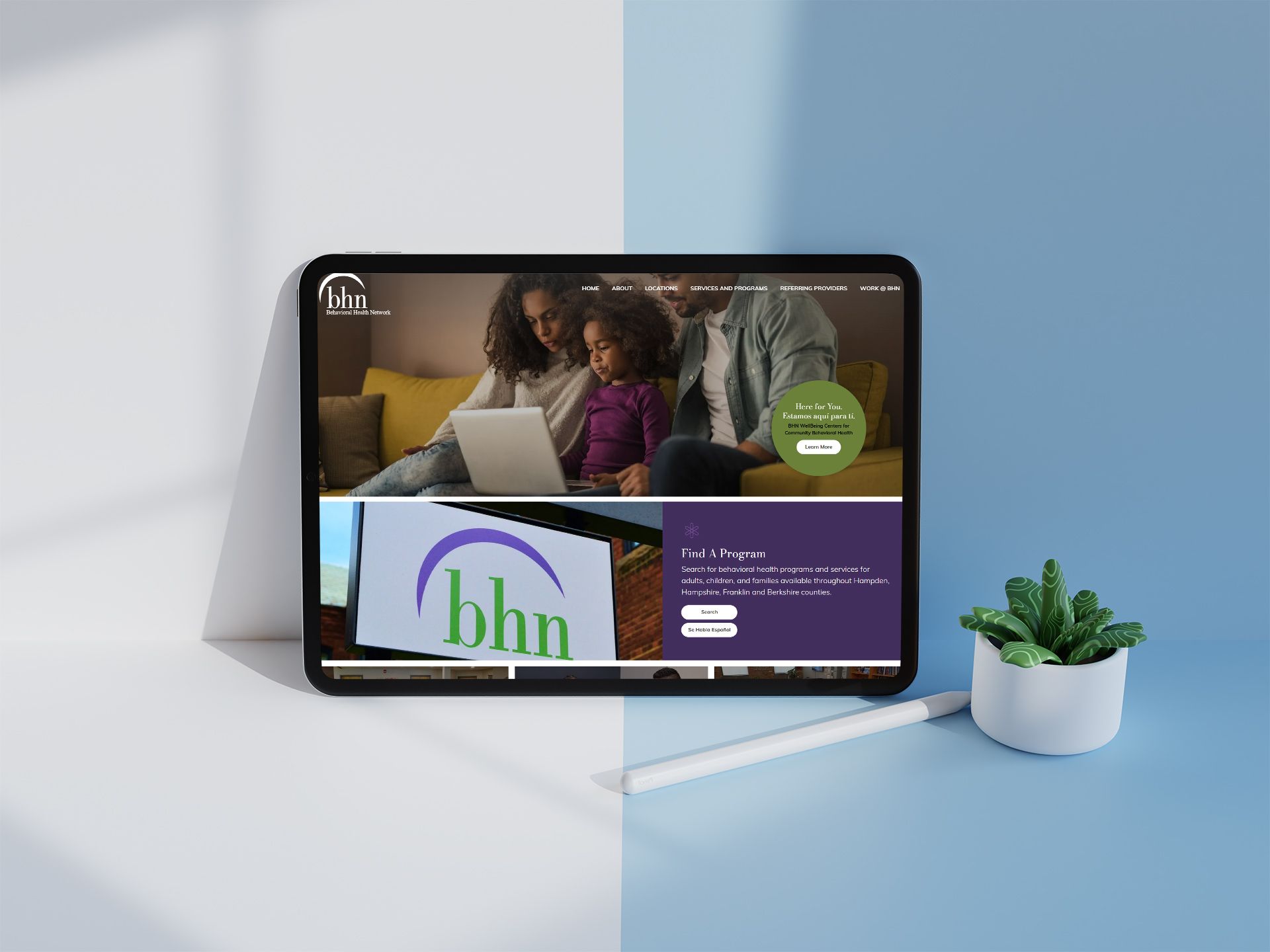
Our journey into the non-profit sector began over 25 years ago, when we noticed that more organizations with in-house teams wanted the freedom to manage their own websites. Just as it is today, these teams weren’t just looking for the latest technology, they wanted solutions that were modern, flexible, and powerful, yet intuitive enough to handle independently, without constantly relying on outside experts.
At the same time, they valued having some guardrails in place to ensure everything stayed on brand and consistent. What we found is that most non-profits prefer a “Do It With Me” experience: they want the autonomy to manage content and updates themselves, but also appreciate expert guidance for setup, training, and more complex tasks.
We saw that non-profits needed tools that empowered them to:
- Take control of their content and make updates quickly
- Easily organize and expand their programs
- Keep their sites looking fresh and professional
- Adopt new technology without steep learning curves
- Looking for budget-friendly ways to move beyond the Blackbaud type systems that were expensive and technical to configure
This collaborative approach empowers teams to move quickly and confidently, while still maintaining quality, consistency, and best practices across their sites.
How Drag & Drop Editing Changed the Game
It wasn’t that long ago that most non-profit websites were built on platforms like WordPress. While WordPress offered plenty of power and flexibility, making updates or maintaining anything beyond the original hardcoded themes often demanded real technical expertise. Even as recently as a decade ago, drag-and-drop website publishing was rare, so even the simplest content changes meant wrestling with complex backends or relying on developers for routine updates.
When we introduced drag-and-drop publishing to our workflow, the impact was immediate: non-profits gained real control over their website content. Instead of getting bogged down by technical roadblocks or flooding our team with support tickets, they could handle more website tasks in-house, supported by clear workflows and hands-on training that we provide to keep everything running smoothly.
This shift led to a sharp drop in support requests almost immediately, as clients could now handle most updates on their own. It was a major breakthrough, allowing both our team and our clients to focus on more meaningful work. As our clients grow alongside us, our team now handles requests, which typically involve more advanced website editing techniques.
The system also lowered training barriers, allowing new team members to get up to speed quickly and reducing onboarding time, which meant organizations no longer had to rely on outside help every time someone new joined. This approach not only streamlines day-to-day management, but also saves ongoing costs.
Plan for Growth
Today, drag-and-drop publishing is standard across most website platforms, making it easier than ever for organizations to launch and update their sites. DIY tools like Wix and Squarespace have empowered non-profits and SMBs to take control of their digital presence without needing to write code, or rely on outside developers or marketing.
However, as organizations grow and their needs become more complex, several common pitfalls can emerge, especially when staff are only familiar with the basics of these platforms.
One of the biggest challenges we see even among power users at our largest clients is that most people stick to the familiar, built-in tools of their website platform. When it comes to implementing more advanced solutions like dynamic content, custom databases, or third-party integrations, staff often hesitate to move beyond what they know.
This is usually where things start to unravel and sites end up with a maze of pages, so during rollout we focus on helping clients prevent content chaos, and help establish workflows to ensure accessibility and best practices are followed from the start.
- Accessibility Gaps: The ease of publishing doesn’t always guarantee that sites are usable by everyone, especially visitors with disabilities. It’s important to ensure that the
tools you use support accessible design, and that content editors play a crucial role in maintaining accessibility.
- Content Sprawl: Many sites end up with a maze of pages that go several layers deep, making navigation confusing for users and difficult for teams to manage. This often happens when content is added ad hoc, without a clear structure.
- Navigation Issues: When information is scattered across too many pages, visitors can struggle to find what they need, which hurts engagement and impact.
- Boxed In: Limitations in customization, scalability, and vendor lock-in. These can hinder growth, often leaving you waiting and hoping for the next platform update instead of moving forward with your own vision. We know, we've been there!
Work Smarter, Not Harder
When it comes to larger non-profits the challenge of managing a growing array of programs, resources, and events quickly becomes apparent. As organizations expand, keeping everything organized can be overwhelming, especially if information is scattered across documents or buried in static web pages.
Instead of relying solely on traditional page-based structures, we introduce a database-driven approach for organizing programs, resources, and other key information.

Meet your new best friend, Airtable
One of our standout features in our Breeze platform is a unique integration with Airtable, allowing teams to enter and update data in a familiar spreadsheet-like environment, instantly sync changes to the website, and eliminate manual entry and duplicate work.
Airtable is a cloud-based platform that combines the simplicity of a spreadsheet with the robust features of a relational database, making it easy for teams to organize, manage, and collaborate on all kinds of data.
We first adopted Airtable internally to track our own tasks and projects, and quickly realized how intuitive and powerful it was for team collaboration. When we discovered that Breeze was fully compatible with Airtable, it was the perfect match, seamlessly connecting our workflow and solidifying our decision to bring these tools together for even greater efficiency and flexibility.
The true innovation lies in our ability to seamlessly sync data from Airtable to Breeze, allowing content to be displayed directly on one or multiple websites using connected widgets, all from a single source of truth. This approach ensures real-time updates and effortless scalability for complex projects.
Take, for example, our collaboration with Mary Pope Osborne, the acclaimed author of over 100 children’s and young adult books, including the beloved Magic Tree House series and its companion Fact Trackers.
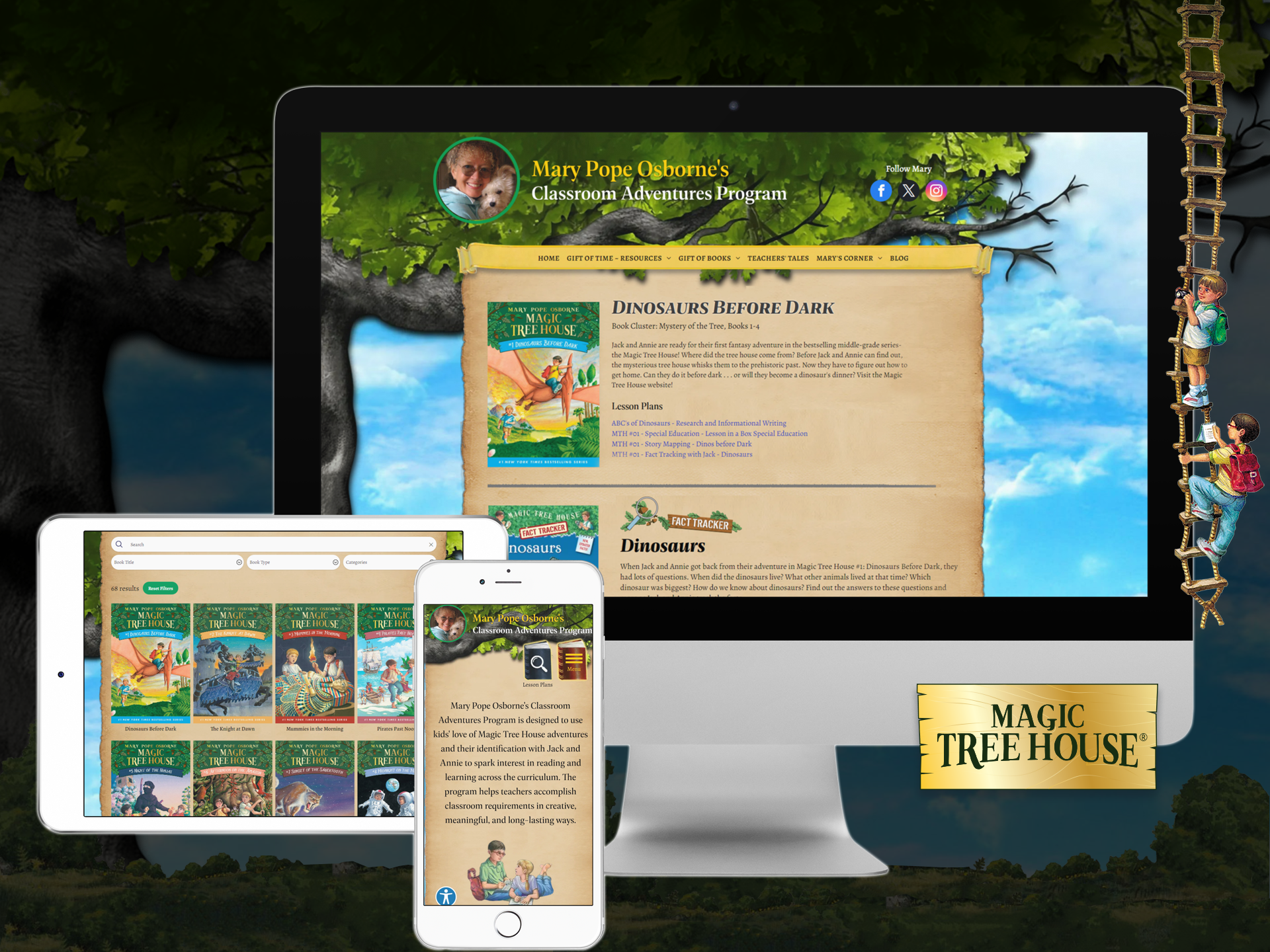
Mary launched the Classroom Adventures Program to spark children’s excitement for reading through the adventures of Jack and Annie. This free educational initiative provides elementary school teachers with a rich collection of resources.
Our challenge was to link every Magic Tree House book to its corresponding Lesson Plans and Fact Trackers and present this information in a way that’s intuitive and fast for educators to use. We organized all books, lesson plans, and fact trackers in Airtable, creating a single, easily managed database synchronized with the website.
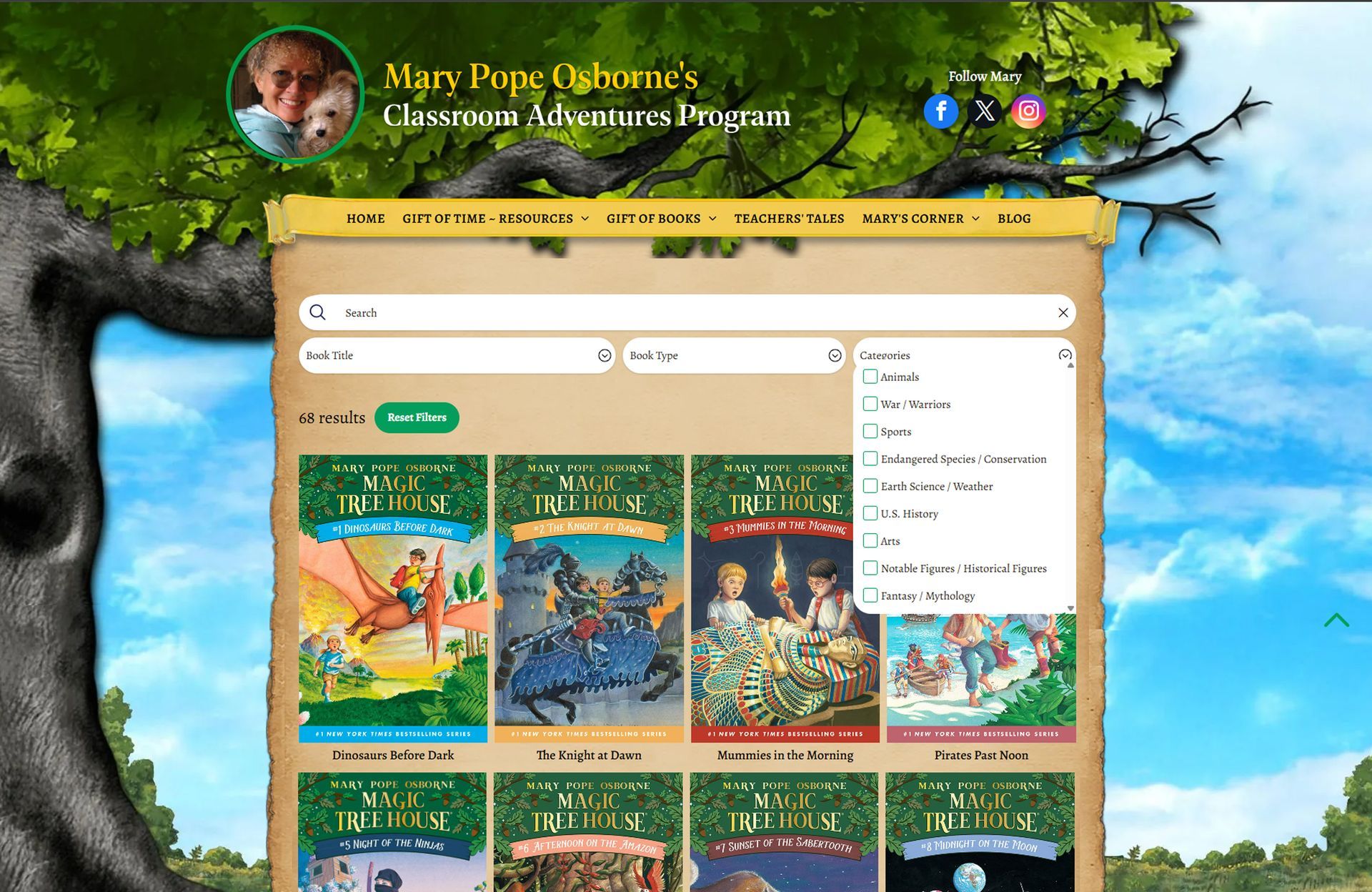
The result is a streamlined, searchable interface that allows teachers to quickly find exactly what they need, saving time and enhancing classroom engagement. Read more about Classroom Adventures Program.
Dynamic Pages
Another handy feature is you can easily generate dynamic web pages from Airtable by connecting your data to custom templates we build in Breeze. This integrated approach allows you to manage all your content in one centralized location and have it automatically displayed across your website.
For example, we created a set of location pages for the Valley Opportunity Council (VOC) Early Education Centers, which operates eight child care centers in Holyoke, Chicopee, and South Hadley, Massachusetts, serving children from 6 weeks to 12 years old.
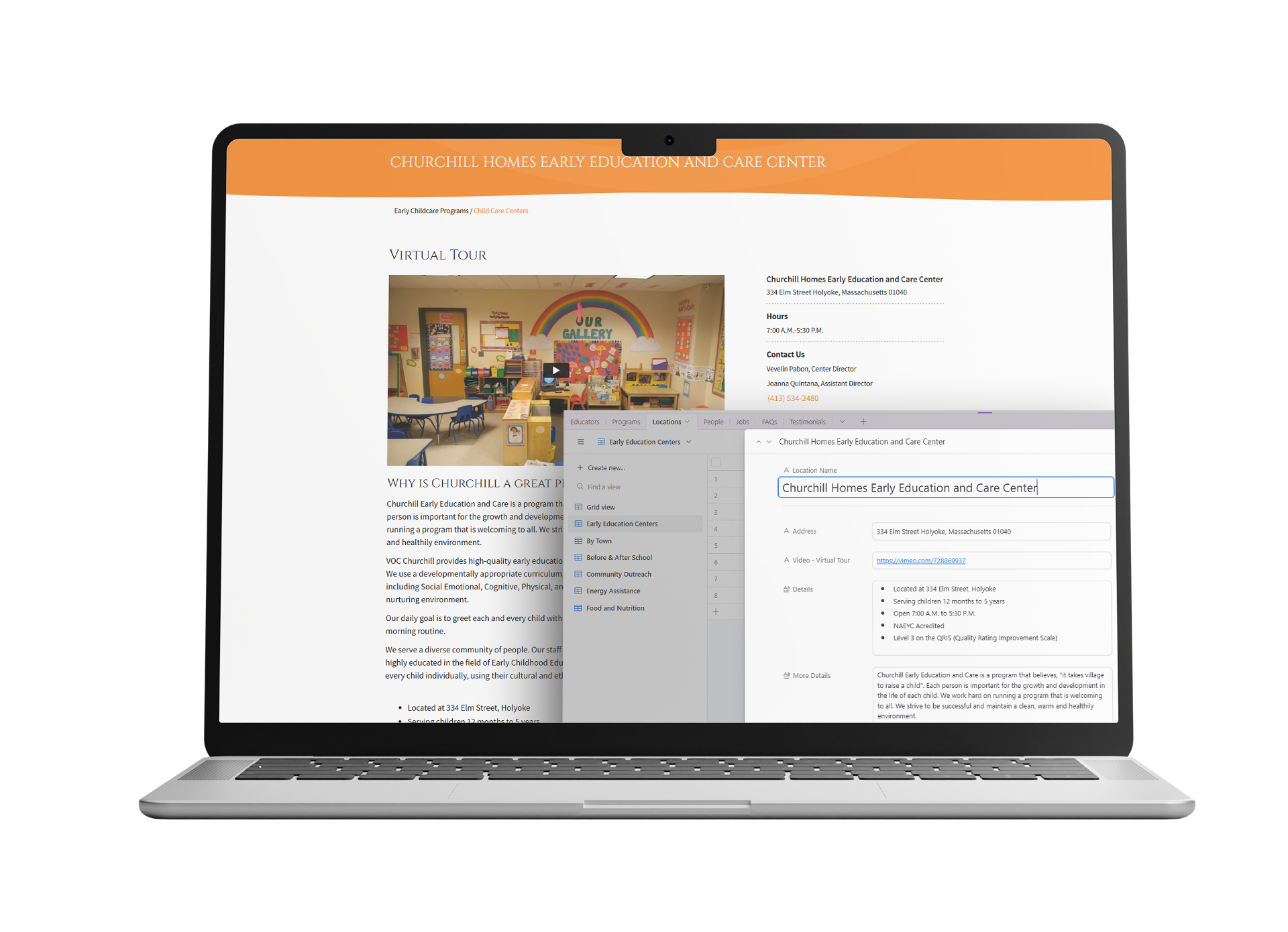
Each Center's page showcases video tours, maps, directions, and more all managed from a single, user-friendly Airtable base. This approach keeps content fresh and engaging for families, while making updates fast and simple for in-house teams.
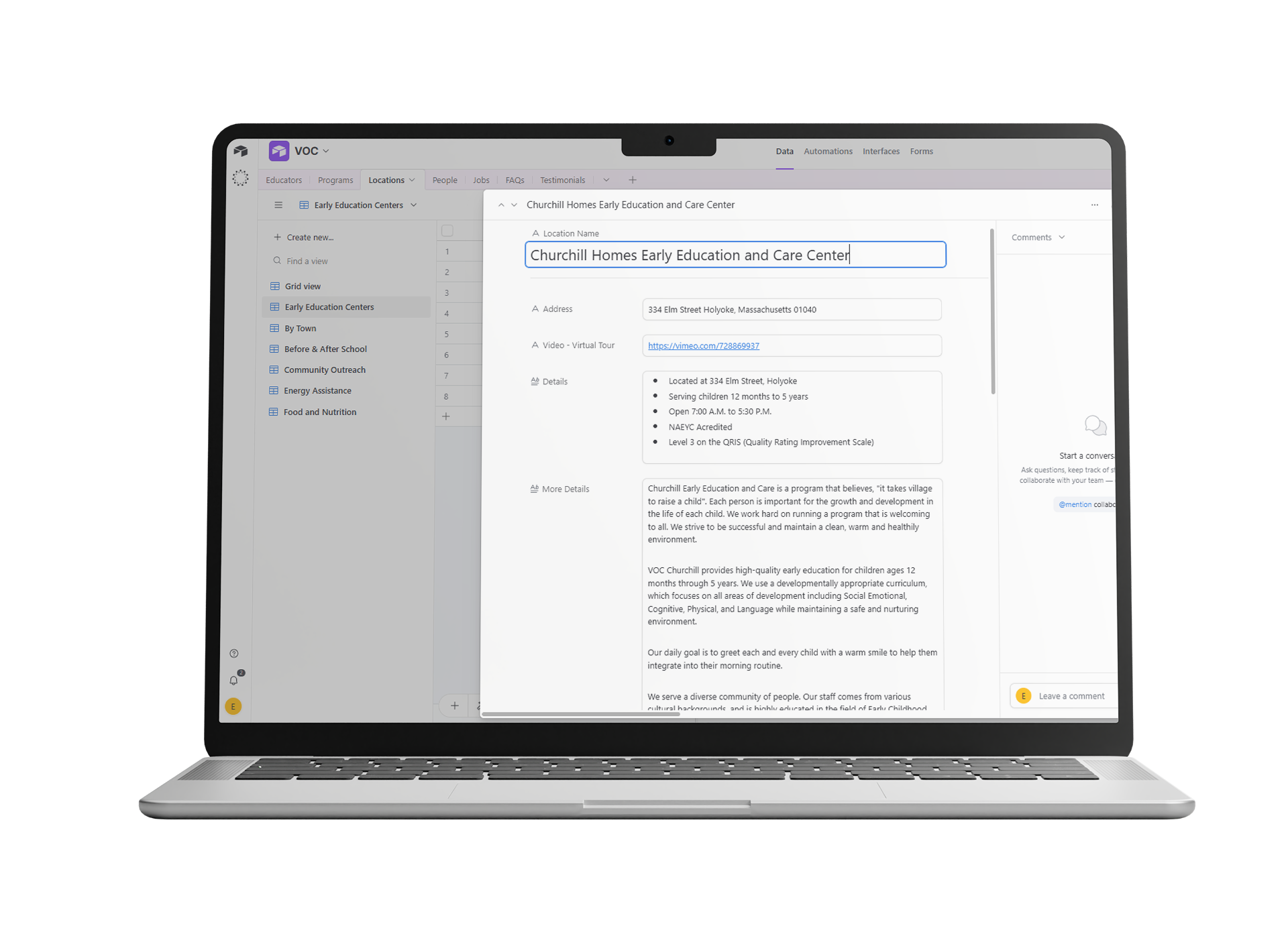
VOC also offers Family Child Care, featuring a network of licensed Family Child Care Educators across Hampden and Hampshire counties. In this case,
we built a dashboard that allows families to easily find a provider near them by filtering by town and using a search feature.
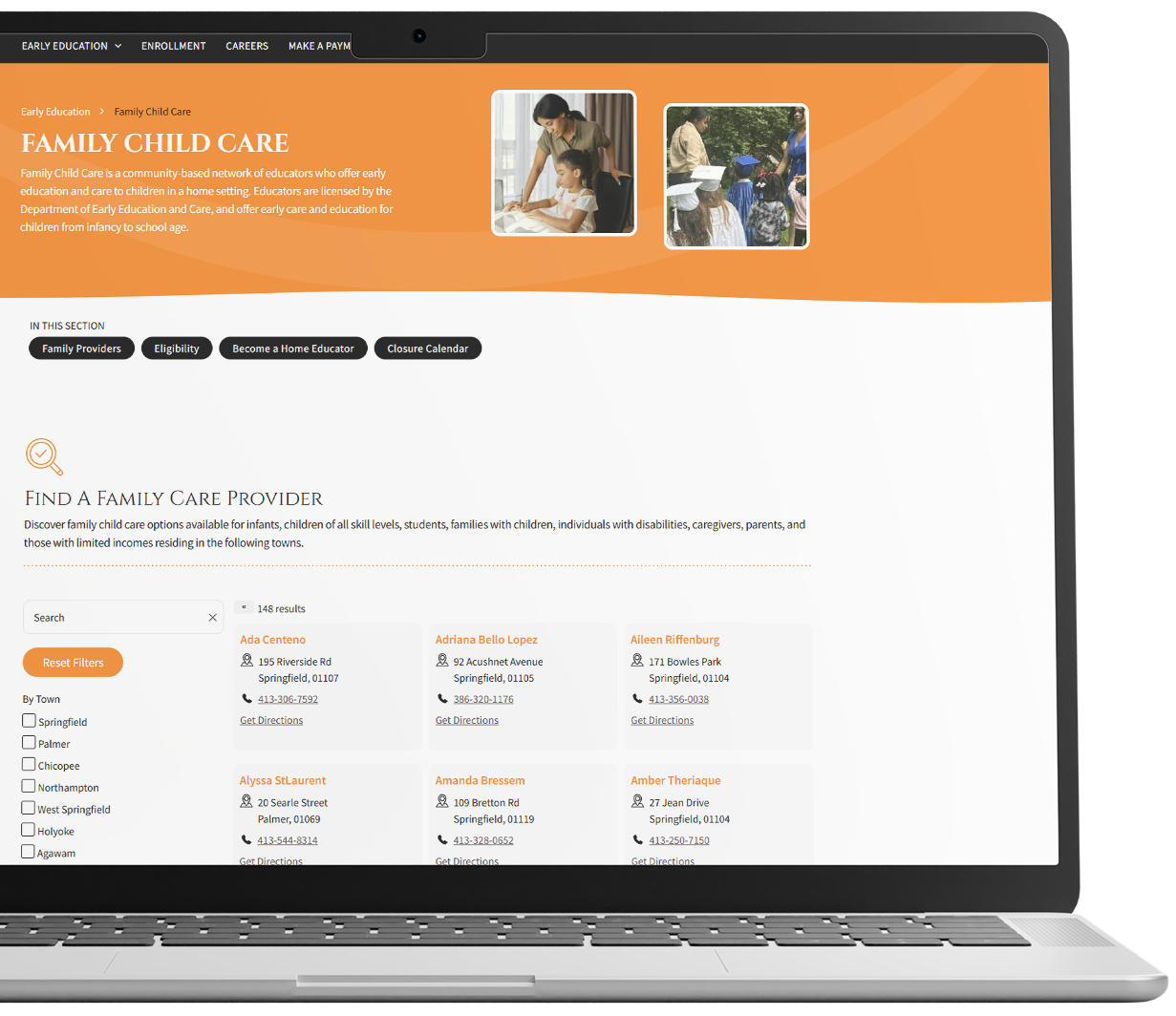
This solution transforms a larger dataset into a user-friendly resource helping families connect with the right providers and making content management effortless for VOC staff.
The best part, VOC’s internal team manages everything directly in Airtable, making it incredibly quick and easy to update data without worrying about design or layout.
We’ve fully automated the process including all behind-the-scenes page metadata, so any changes made in Airtable are instantly reflected on the website. This not only saves time and keeps everything consistent, but also helps maintain accessibility standards.
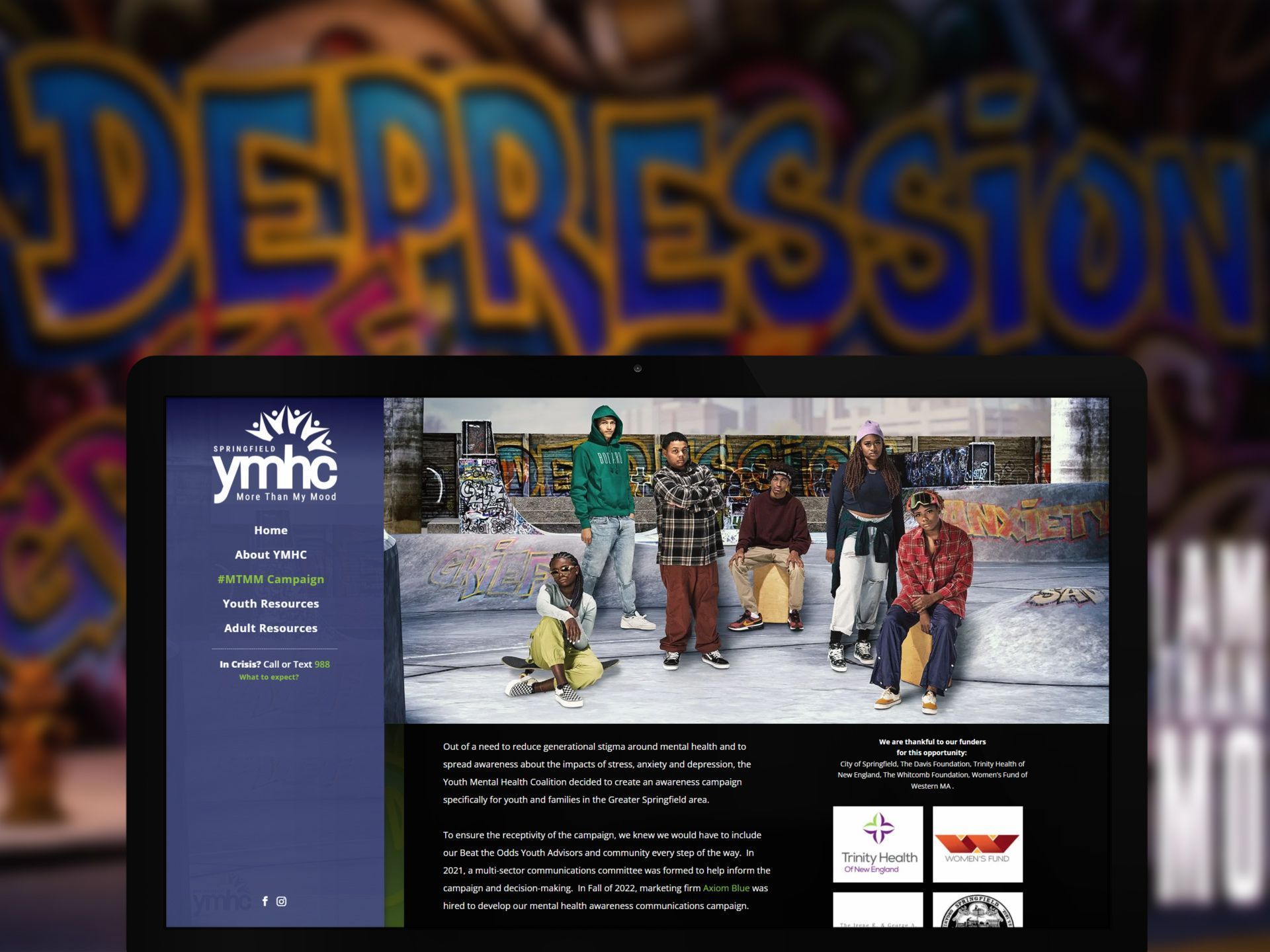
Here is another example of using Airtable to offer Mental Health Training & Workshops for The Springfield Youth Mental Health Coalition (YMHC). Training and workshops are open to professionals working with youth, and residents – including youth - living in the Greater Springfield area.
In this implementation we offer two filter options: by topic and by age group, along with a search function to allow participants to quickly find relevant training opportunities tailored to their interests or the needs of the youth they support.
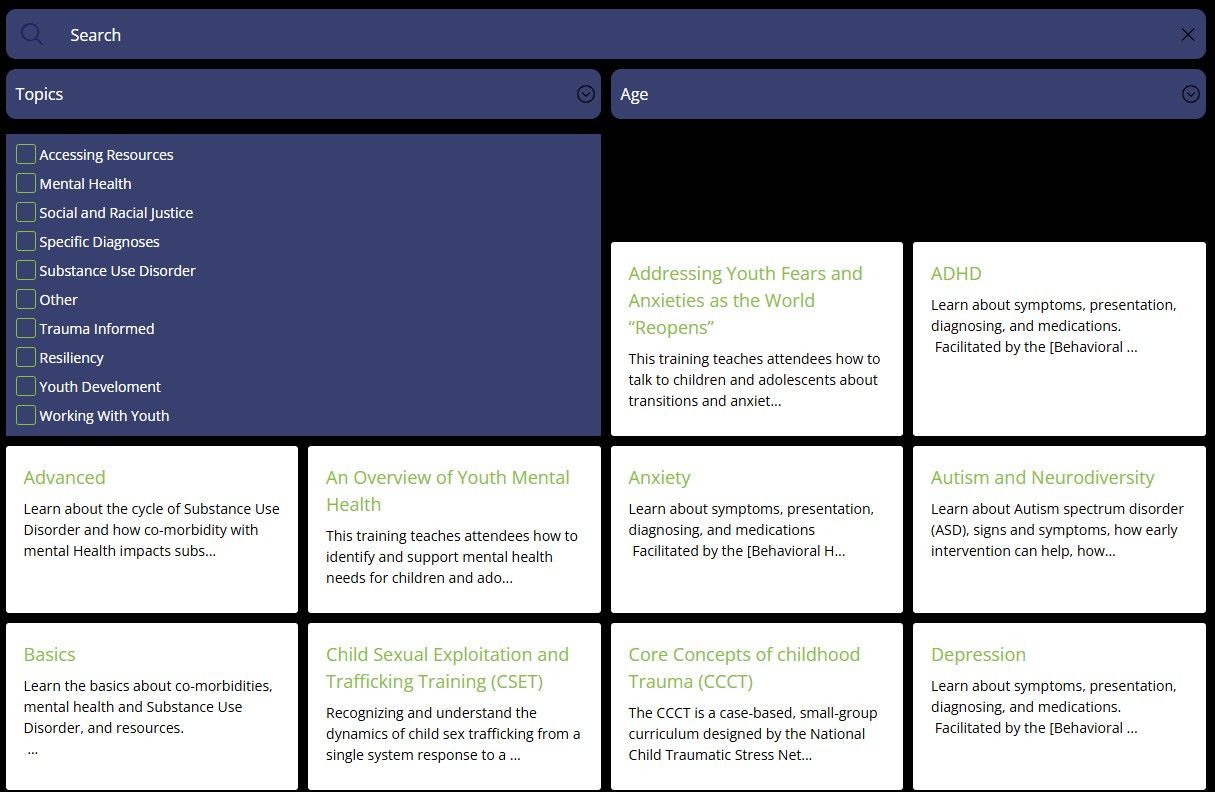
Microsites
Both VOC, and the Youth Mental Health Coalition project are great examples of what we call a microsite, a dedicated website created for a specific department, program, or initiative within a larger organization. Microsites function much like SharePoint sites, giving each team or department its own standalone web presence, fully tailored to its unique needs and audience.
Microsites are a super flexible way to tackle all sorts of needs. Want to ramp up hiring? Spin up a dedicated recruitment site that’s built to turn clicks into applications—especially handy if you’re running paid ads for job openings or employer branding.
They’re also perfect for taking those old-school annual reports (think paper or PDFs) and turning them into interactive online experiences that are way more engaging and easier to explore. Plus, schools and organizations can each have their own custom microsite, giving every community a unique web presence while maintaining the flexibility and autonomy each team needs.
Key Benefits of Microsites with Breeze
- Departmental Independence: Each team or department can manage its own content, resources, and branding, while still aligning with the organization’s overall web strategy.
- Single Sign-On (SSO): Breeze supports single sign-on, making it easy for staff to access and manage multiple microsites without juggling separate logins.
- Centralized Data Management: The real advantage comes from Airtable integration. A single Airtable base can connect to multiple microsites, allowing you to filter and display data specific to each site. This means updates made in Airtable are instantly reflected across all connected microsites, keeping information current and eliminating redundant work.
- Scalability: As your organization grows, you can easily launch new microsites for additional departments, programs, or initiatives—each powered by the same streamlined workflow.
The Breeze Editor
Breeze, our custom-built solution for non-profits is powered by a specialized version of Duda, a top-tier web builder renowned for its flexibility, speed, and exceptionally intuitive drag-and-drop editing experience.
With over twenty years of web development know-how packed in, Breeze has everything non-profits need to launch a modern site that’s easy to manage, scales as you grow, and just works. You get all the essentials—no tech headaches, no complicated learning curve. Just a smooth, reliable way to keep your online presence looking sharp and running strong.
- Fast, Mobile-Friendly Sites: Optimized for speed and seamless performance on any device.
- Easy Drag-and-Drop Editing: Intuitive tools that empower teams to update content
- Robust Hosting: Enterprise-grade protection and reliability, hosting powered by Amazon
Breeze goes beyond Duda’s core capabilities by layering in custom solutions designed specifically for the unique needs of non-profit organizations:
- Seamless Airtable integration, manage dynamic, database-driven content with ease
- Organize programs, resources, or staff in structured, searchable formats
- Advanced Search Interfaces: Help users find information quickly and intuitively
- Interactive Maps: Visualize locations, services, or events for your audience
- Custom slideshows, galleries, audio, and video widgets
- Accessibility Tools
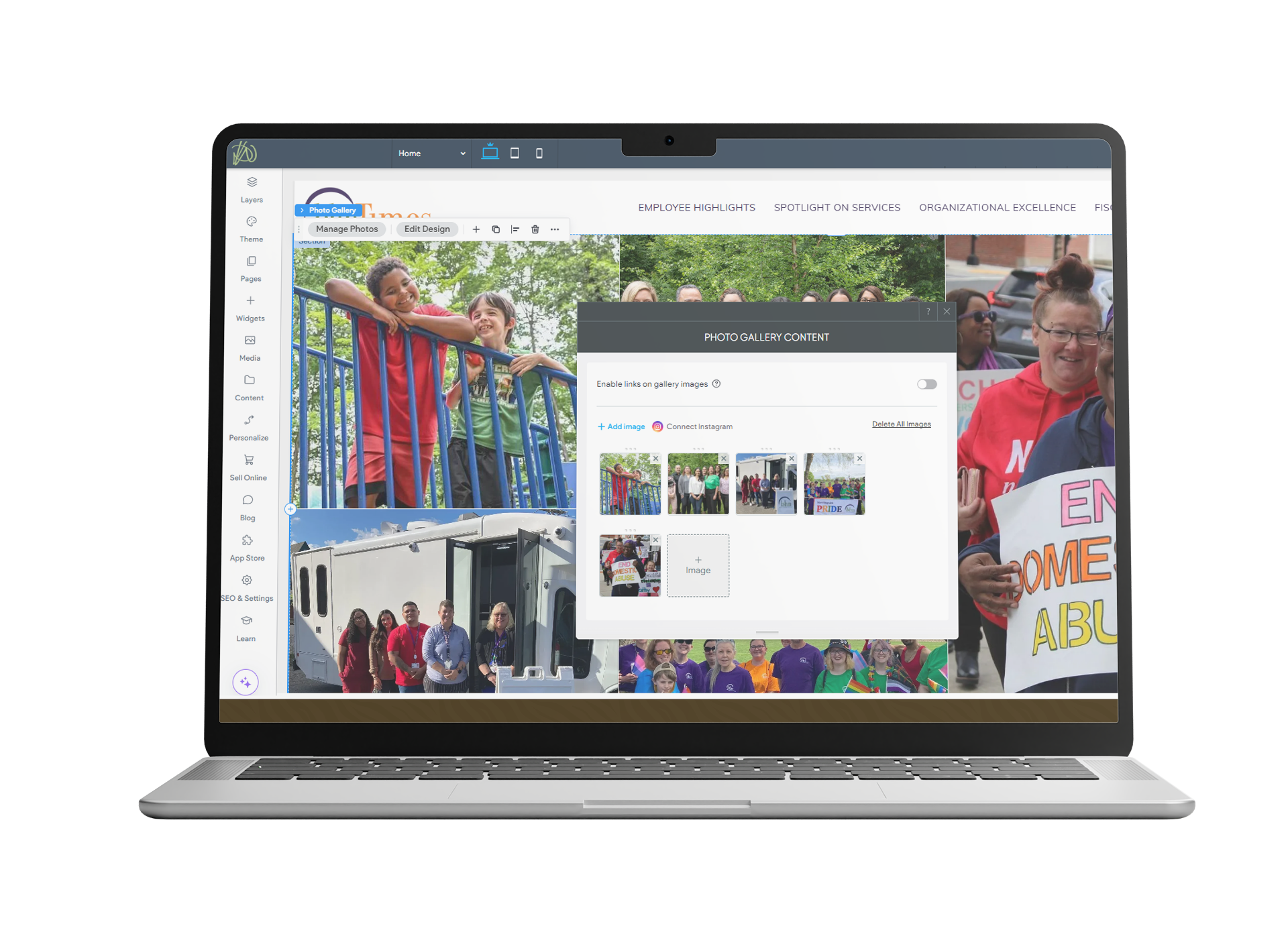
Everyone wants a platform that can stand the test of time, and we’ve made it a priority to keep evolving. Over the years, we’ve outgrown two major platforms not to mention a host of one-off projects—always searching for something that could keep up with our needs and ambitions.
Duda has proven to be that forward-thinking solution. It’s genuinely ahead of the curve, delivering outstanding performance and a suite of advanced features right out of the box. What really sets Duda apart is its commitment to continuous improvement: new features roll out regularly, including cutting-edge AI-powered tools helping teams work more efficiently while proactively monitoring site health and managing ongoing improvements.

For even more peace of mind, you can easily add built-in accessibility services like AudioEye. This gives your site an extra layer of protection, helping you meet ADA and WCAG standards and catching any accessibility issues before they become a problem, so everyone can use your site with confidence.
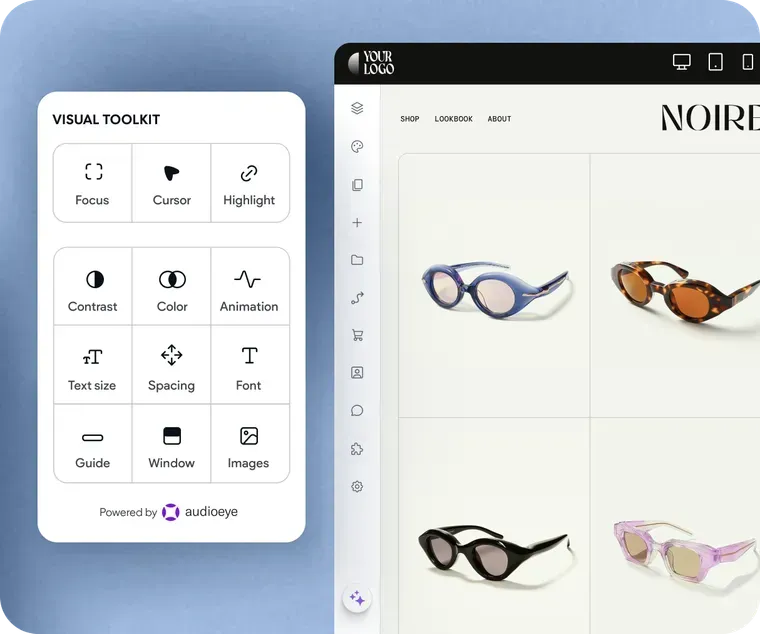
Everyone needs a little conditional love—especially when it comes to forms! We helped a local Zoo in Springfield MA, streamline their camp registration and guided tour sign-ups by turning lengthy forms into user-friendly, multistep processes. This made it much easier for families to complete their registrations and significantly reduced abandonment rates.
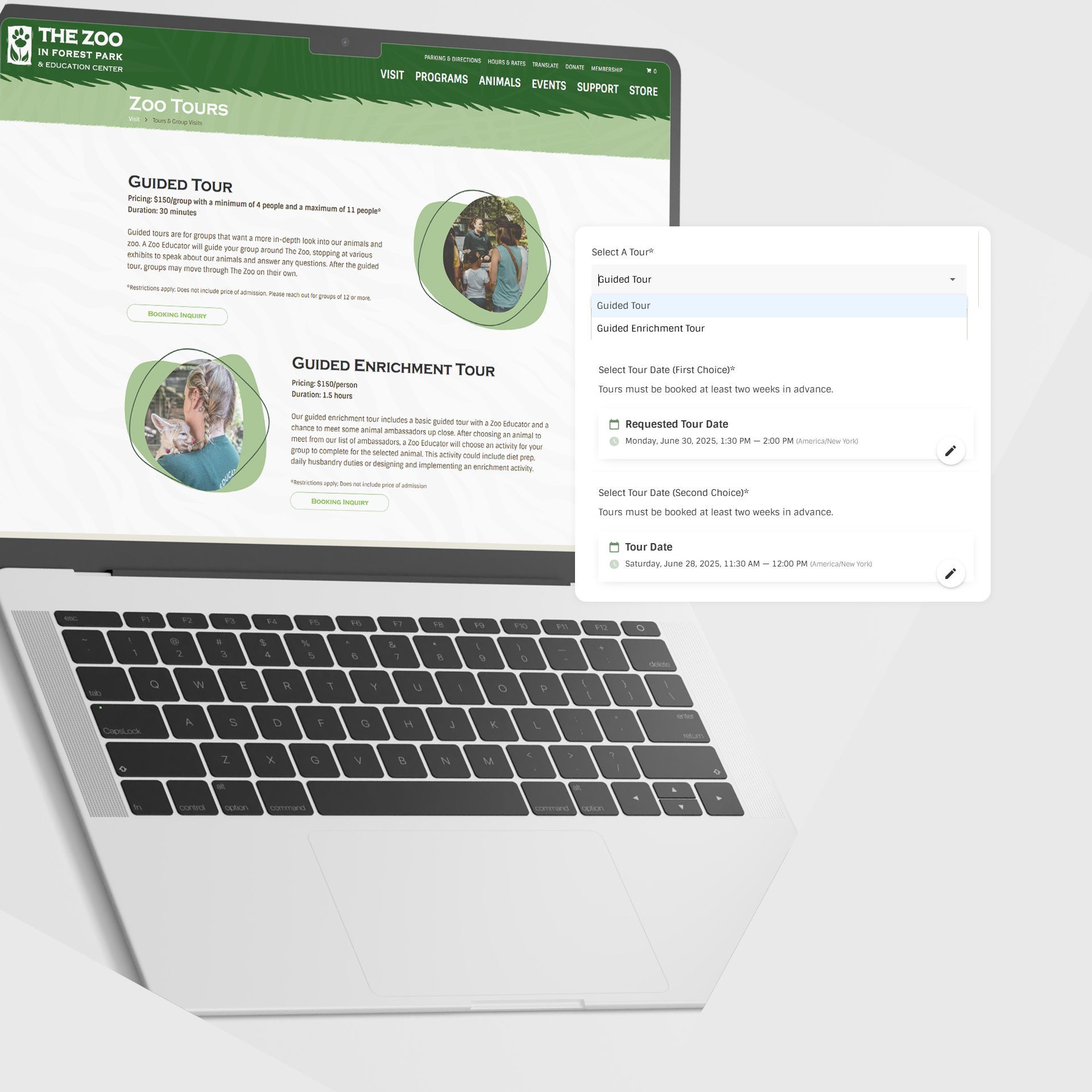
And yes, we also came up with some creative ways to accept donations, like letting supporters sponsor their favorite zoo animals or contribute to special projects making giving just as engaging and fun as a day at the zoo!
Like what you see, below are a few examples of non-profit websites we've completed using Breeze.
Is your non-profit organization looking to modernize its website presence, streamline program management, and empower your internal team? Wild Apple Design Group is here to help.
Why Choose Wild Apple Design Group?
- Expertise in Non-Profit Solutions: Over 25 years of experience helping nonprofits and small to medium-sized organizations leverage web technologies for greater impact.
- Comprehensive Non-profit Website Services: From redesigning websites to optimizing content management workflows, we provide end-to-end solutions tailored to your mission.
- Team Empowerment: We focus on building your internal team’s capacity, ensuring you can independently manage and grow your digital assets.
- Proven Results: Our strategic approach drives organizational growth, improves operational efficiency, and enhances digital engagement.
Certified Diversity Supplier
Wild Apple Design Group (W. A. Design, LLC d/b/a Wild Apple Design Group) is officially recognized as both a Women Business Enterprise (WBE) and a Disadvantaged Business Enterprise (DBE) in the state of Massachusetts. These certifications demonstrate our commitment to diversity and qualify us for participation in state and federal supplier diversity programs.
Let’s Get Started!
If you’re ready to take your non-profit’s website to the next level and unlock new opportunities for your organization, contact Wild Apple Design Group today. We look forward to partnering with you on your digital transformation journey.

About The Author
Eric Belliveau serves as the Director of Web Ops @ Wild Apple Design Group, bringing 25 years of expertise in content management workflows and systems. He’s passionate about helping organizations adopt and maximize the benefits of evolving web technologies, always with a strategic focus on long-term growth and success.


